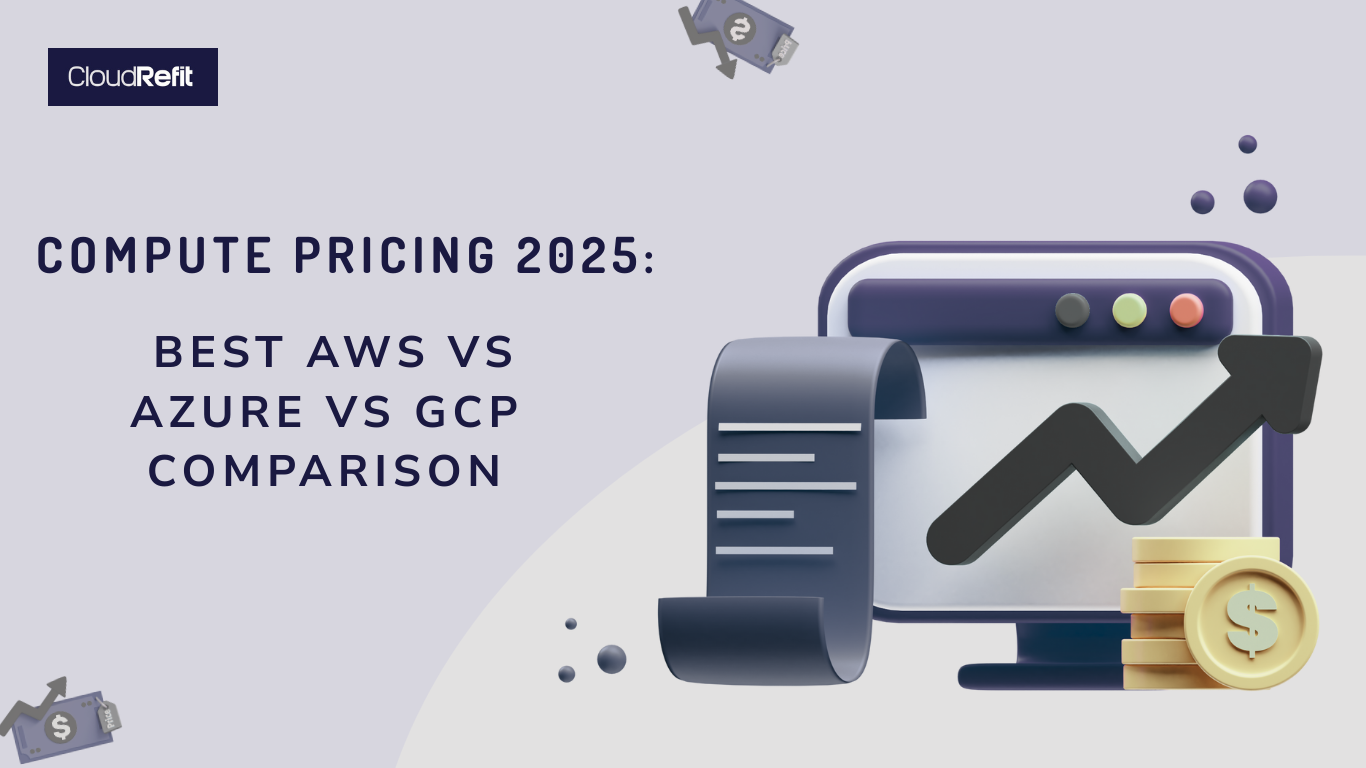Choosing a cloud vendor demands a clear understanding of compute pricing alongside performance metrics. Amazon Web Services (AWS), Microsoft Azure, and Google Cloud Platform (GCP) each present unique compute pricing models. In this guide, we’ll compare compute pricing, storage rates, data egress fees, and performance benchmarks to help you decide which provider offers the optimal mix of cost and capability.

Cost Comparison (Compute Pricing Focus)
1. Compute Pricing
| Service | AWS EC2 | Azure VMs | GCP Compute |
| Base Compute Pricing | Medium | Medium to High | Generally the Lowest |
| Discounts | Savings Plans / Reserved Instances | Azure Hybrid Benefit | Sustained & Committed Use Discounts |
| Key Strengths | Wide variety of instance types | Excellent Windows integration | Flexible compute pricing and transparent rates |
- AWS EC2 computepricing offers Savings Plans and Reserved Instances, reducing costs by up to 72%.
- Azure computepricing leverages Azure Hybrid Benefit for Windows and SQL Server, cutting fees significantly.
- GCP computepricing provides automatic Sustained Use Discounts and Committed Use Contracts, making its compute pricing highly competitive.
2. Storage & Egress
- While computepricing determines your VM costs, storage fees for AWS S3, Azure Blob, and GCP Cloud Storage also impact your overall cloud cost.
- Data egress charges compound with heavy compute usage—expect around $0.09/GB on AWS and $0.08/GB on GCP after the first free gigabyte.
3. Long‑Term Commitment on Compute Pricing
- AWS and Azure require 1‑ or 3‑year commitments to lock in lower computepricing.
- GCP’s computepricing automatically discounts sustained usage without upfront reservations.
Performance Comparison
1. Compute & Auto‑Scaling Performance
- AWS Nitro instances deliver top-tier network I/O and compute performance, though their computepricing can rise without proper scaling policies.
- Azure VMs shine in Windows workloads, but careful benchmarking of computepricing across families is crucial.
- GCP Compute Engine often leads in raw benchmark tests per dollar of computepricing.
2. Kubernetes & Containers
- Containerized workloads on EKS, AKS, or GKE affect your computepricing because each node increments the bill.
- GKE’s automation features can optimize node count and reduce unnecessary computepricing charges.
3. Use‑Case Scenarios for Compute Pricing
| Use Case | Best Fit & ComputePricing Rationale |
| Windows/.NET workloads | Azure – Hybrid Benefit lowers computepricing |
| AI & big‑data analytics | GCP – BigQuery and computepricing synergy |
| Global expansion | AWS – Diverse instance options justify pricing |
| Startups on tight budgets | GCP – Lowest baseline computepricing |
4. Choosing Based on Compute Pricing
- Heavy Microsoft stack? → Azure computepricing with Hybrid Benefit is ideal.
- Burst‑heavy tasks? → GCP computepricing auto‑discounts sustainment.
- Maximum instance variety? → AWS computepricing plus Savings Plans delivers flexibility.
🚀 CloudRefit Tip on ComputePricing
At CloudRefit we analyze your workloads to recommend the best computepricing strategy—combining open‑source tools and multi‑cloud designs that can cut costs by up to 40%.
📩 Book your free consultation now and optimize your computepricing roadmap.
📞 www.cloudrefit.com

